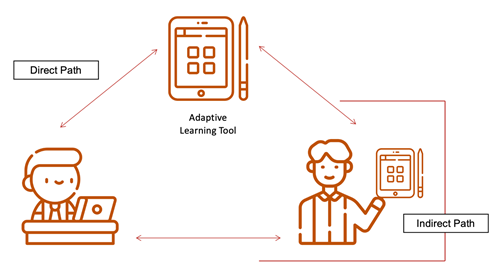Breakthrough
Adaptivity can be defined as the extent to which education is adapted to the needs of individual students.
Adaptive learning tools offer the possibility to use data about student behavior and performance during learning in two ways, the so-called micro-adaptivity.
This happens on the one hand in the direct interaction between the technology and the student by aligning assignments to the performance of the students.
On the other hand, it is achieved by using the data from the adaptive learning tool to support teachers in adapting their didactic actions to the needs of the students.
At the Adaptive Learning Lab, we looked at the extent to which there is micro-adaptivity in the interaction between learner and technology, known as the direct path, and between the teacher and technology, the indirect path.

In addition, the relationship between the use of an adaptive learning tool and the learning outcomes of students was investigated.
The team found that adaptive exercises are increasingly used and that teachers are increasingly turning to dashboard data to better tailor their teaching to the needs of students individually.
We discovered that the learning outcomes of students working with Snappet, a digital core maths program, were at least comparable to those who did not. Learners who spend more time on Snappet scored higher on maths skills and in the lower grades these students scored higher on spelling skills. Snappet leads to changes in the learning environment, but at the same time this development is still in full swing.
Adaptive learning tools allow students to practice more and more at their own level and the results indicate that this contributes to improving their skills. Thus, we expect that a personalized learning environment will enhance the learning process of students.
Want to read more about the project? Click here.



